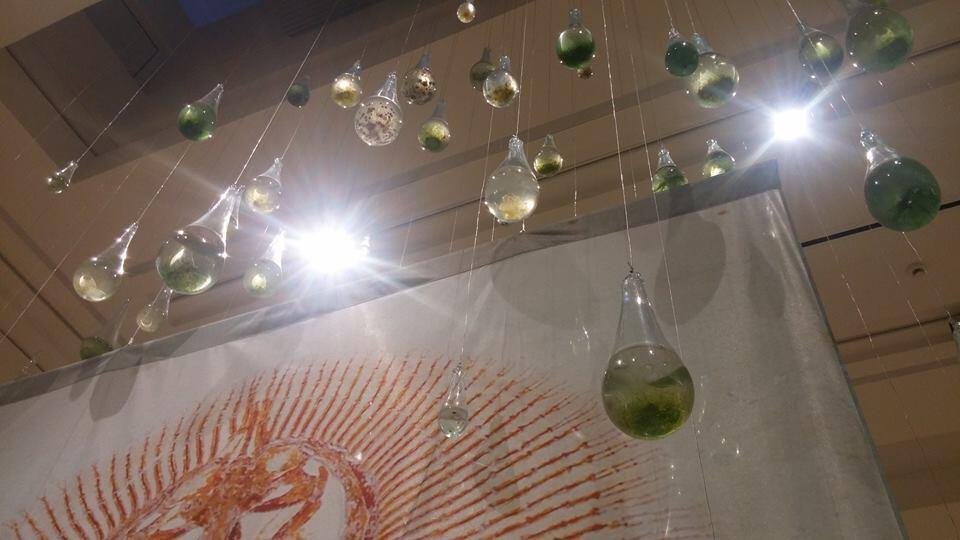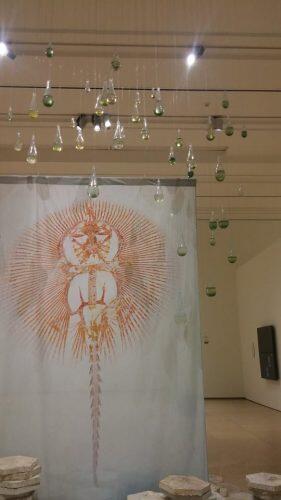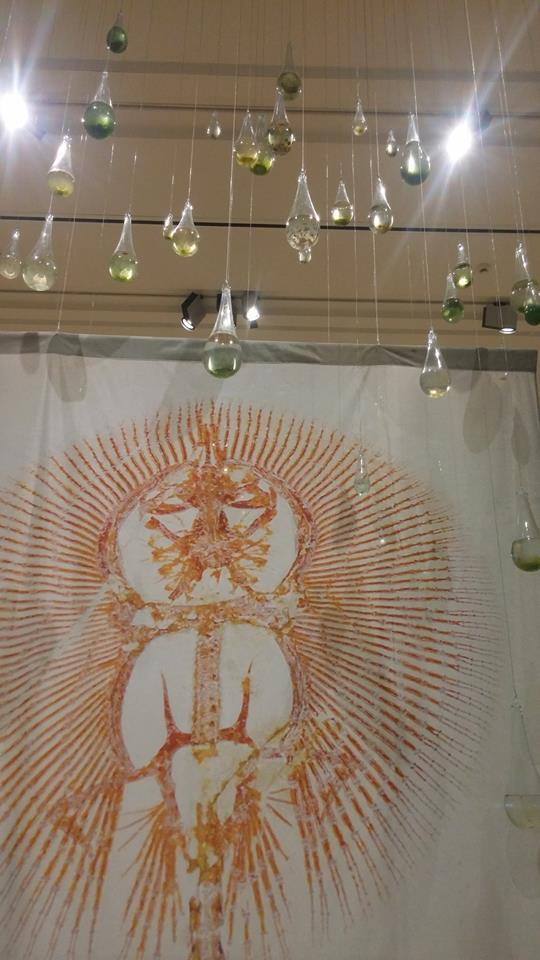“Let’s Talk About the Weather: Art and Ecology in a Time of Crisis”, curated by Nataša Petrešin-Bachelez and Nora Razian, is not a heartwarming installation which will make you smile upon seeing it. On the other hand, it’s just another manifestation of an ugly, polluted reality we live in. I will limit my article to discussing only one aspect of the installation; Amor Fati.
Amor fati (love your fate) is a Latin phrase that is translated as “love of fate” or “love of one’s fate”, referring to embracing the terms of one’s life, including loss and suffering. That specific installation, produced by the Sursock Museum , includes polluted water from Lebanese sources, hand-blown glass, recycled paper, and a printed banner.
Upon seeing the installation from a distance, you get stricken with the orange-brown color, you start wondering about it’s meaning. The feeling of it on a paper, makes it look dead, with that color dominating it specifically. There is no life in what appears to be an image is of a fossilized Cyclobatis that once inhabited the warm sea in what is now Lebanon, as the sursock museum publication indicates.
You read what the museum has to explain about it, you read that “Fossilized life – in the guise of petroleum – is the engine of our culture”. You also read that “The historian Dipesh Chakrabarty connects fossil fuel to one of the deepest values of Western culture. “. . . One could say that freedom has been the most important motif of written accounts of human history of these two hundred and fifty years. […] The mansion of modern freedoms stands on an ever-expanding base of fossil-fuel use. Most of our freedoms so far have been energy-intensive.”…. but still, you seem to understand nothing more than “loss”, by the continuous use of fossil fuels, and “grief”, for an unknown but ugly future, dominated by more destruction of earth’s resources.
Let’s get back to the glass dangling down in front of the poster. Art can really manifest the answers to our questions in the best form, silently. Real material polluting our life here overrides the poster. That is real polluted water in Lebanon, put in blown glass.
Let’s look at it from another, nearer angle. Let’s try a different perspective. The water is disgusting. In all shades of green perhaps, here is our “fati”, or fate.
The basic imperative of amor fati is to shape a destiny we are able to love, the museum publication explains. It also mentions that “the destiny of all carbon-based life forms arcs toward the condition of the fossil”, adding that “the carbon in our bodies will join that of countless other life forms leaving their marks in Earth’s geological history”.
The museum also mentions “Although human history is but a fraction of geological time, the legacy of our presence is overtaking the future, marking the geological record with accelerated destruction. The question is whether we can comprehend a fate shared by countless other beings, human and nonhuman”.
Can we really comprehend that fate?… and in what way? what do we really need in order to know that we live a shared fate with all the other organisms on Earth??….
We need to look at this installation… and pause. Then think! What do we really want from this planet? and how will we achieve it?… Take a closer look at it from a nearer angle. Should we love our “polluted” fate?… or could we interfere in that fate?…














